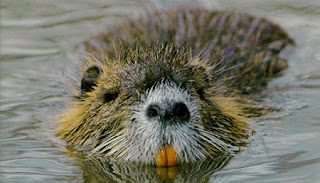Nutria colonies once riddled the Blackwater National Wildlife Refuge, an ecologically fragile reserve on the Delmarva Peninsula, the nearly 200-mile-long isthmus between the bay and the Atlantic Ocean that includes parts of Maryland and Delaware and a sliver of Virginia. Over the past decade, trappers with a federal eradication program have come tantalizingly close to eliminating them, making Delmarva a closely watched example for other nurtria-plagued regions, including the Gulf Coast and the Pacific Northwest.
But they have proved to be a cunning and resilient adversary. Despite the program’s undisputed success, nutria have unexpectedly turned up recently in pockets along rivers like the Manokin, a distant pond in Delaware, and a marsh near the Virginia border where they had not been spotted for a decade.
Wildlife officials in Delaware are watching with worry, as are those in Virginia, unnerved by a recent report of nutria close to their sliver of the Delmarva. There are also growing colonies on the coast near Virginia Beach that could migrate to ecologically sensitive areas, said Michael L. Fies, wildlife research biologist with the Virginia Department of Game and Inland Fisheries.Such projects are often easy and productive at the beginning. It's easy to find and destroy a lot of nutria when they are extremely common, but much like sweeping a dirty floor, it's hard to make sure you get every speck of dirt. Getting down to the last few, especially when the dirt grains breed and move, is much more difficult and expensive.
Tactics are evolving accordingly, turning the peninsula into a testing ground for techniques to combat the nocturnal nutria. Infrared cameras record their nighttime movements and how they react to lures concocted from scent glands. There are training dogs to sniff out “nutes,” as the team calls them.
Technology is supplementing time-tested trapping methods. Surgeons have implanted radio transmitters into captive “Judas” nutria to lead them to new colonies. Trackers like Mr. Dawson collect fur from “hair snares” for lab analysis. Satellite positioning marks the location of droppings and footprints. The team’s leader, Stephen R. Kendrot, jokingly calls their headquarters “the war room.” The project has yielded some startling results: nutria tracked with radio collars can travel miles in one night. Their tenacity has earned grudging admiration from the men and women prowling the waterways in pursuit.
And why is removing the Nutria important?
Nutria consume a quarter of their body weight daily, feasting on the tender roots of marsh grasses. Those marshes serve as habitat for young crabs and fish, and a natural filter for bodies of water like the Chesapeake.As I have mentioned before, salt marshes can keep up with sea level rise, with the marsh grasses producing new soil which builds up the soil marsh and keeps it ahead of the rising sea. However, soil doesn't build up in the eatouts, and these areas will not keep abreast of sea level rise, and in fact, will continue to deepen faster as to the soil that was under them continues to rot and erode away.
Destroyed marshes known as eatouts can become enormous lakes. The loss of marsh exacerbates summertime dead zones of oxygen-depleted water in the bay, killing crabs, oysters and fish, said Beth McGee, senior water quality scientist at the Chesapeake Bay Foundation, a conservation group.
I hear they are rather tasty.


No comments:
Post a Comment